The Tesselaar Tulip Festival is held in Silvan, Victoria every spring, displaying more than 120 varieties of tulips are shown on a 55-acre farm. [1] [2] This tulip farm was initiated by a couple of Dutch immigrants, Cees and Johanna Tesselaar. They arrived in Melbourne in 1939 and started to grow tulips, gladioli and daffodils on their land. After purchasing more land in Silvan, they grew more tulip bulbs, which attracted people to stop by on their property and admire their fields. In 1954, the Tesselaars open the farm to the public, with a coin donation for the Australian Red Cross. In 2017, around 900,000 tulip bulbs were planted using modern machinery, and 80,000 bulbs are still planted traditionally by hand. [3] [4] The tulip festival has evolved to include music, food and wine festival to attract more visitors during the spring season (September - October). [5]
In 2020 the Festival was cancelled, for the first time, due to COVID-19 lockdown rules. [6]

The National Gallery of Victoria, popularly known as the NGV, is an art museum in Melbourne, Victoria, Australia. Founded in 1861, it is Australia's oldest and most visited art museum.

The lily family, Liliaceae, consists of about 15 genera and 610 species of flowering plants within the order Liliales. They are monocotyledonous, perennial, herbaceous, often bulbous geophytes. Plants in this family have evolved with a fair amount of morphological diversity despite genetic similarity. Common characteristics include large flowers with parts arranged in threes: with six colored or patterned petaloid tepals arranged in two whorls, six stamens and a superior ovary. The leaves are linear in shape, with their veins usually arranged parallel to the edges, single and arranged alternating on the stem, or in a rosette at the base. Most species are grown from bulbs, although some have rhizomes. First described in 1789, the lily family became a paraphyletic "catch-all" (wastebasket) group of lilioid monocots that did not fit into other families and included a great number of genera now included in other families and in some cases in other orders. Consequently, many sources and descriptions labelled "Liliaceae" deal with the broader sense of the family.
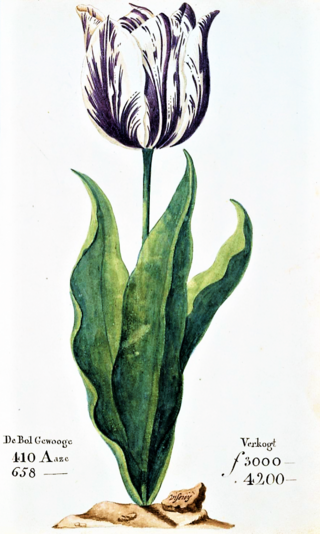
Tulip mania was a period during the Dutch Golden Age when contract prices for some bulbs of the recently introduced and fashionable tulip reached extraordinarily high levels. The major acceleration started in 1634 and then dramatically collapsed in February 1637. It is generally considered to have been the first recorded speculative bubble or asset bubble in history. In many ways, the tulip mania was more of a then-unknown socio-economic phenomenon than a significant economic crisis. It had no critical influence on the prosperity of the Dutch Republic, which was one of the world's leading economic and financial powers in the 17th century, with the highest per capita income in the world from about 1600 to about 1720. The term tulip mania is now often used metaphorically to refer to any large economic bubble when asset prices deviate from intrinsic values.

Tulip festivals are held in several cities around the world, mostly in North America, usually in cities with a Dutch heritage such as Albany, New York; Ottawa, Ontario; Gatineau, Quebec; Montreal, Quebec; Holland, Michigan; Lehi, Utah; Orange City, Iowa; Pella, Iowa; Mount Vernon, Washington; and Woodburn, Oregon, and in other countries such as New Zealand, Australia, India, and England. The tulips are considered a welcome harbinger of spring, and a tulip festival permits residents to see them at their best advantage. The festivals are also popular tourist attractions. The tulips are displayed throughout the cities. In certain years the peak of tulips does not coincide with the actual festival due to climatic conditions.

Fritillaria meleagris is a Eurasian species of flowering plant in the lily family Liliaceae. Its common names include snake's head fritillary, snake's head, chess flower, frog-cup, guinea-hen flower, guinea flower, leper lily, Lazarus bell, chequered lily, chequered daffodil, drooping tulip or, in the British Isles, simply fritillary. The plant is a bulbous perennial native to the flood river plains of Europe where it grows in abundance.
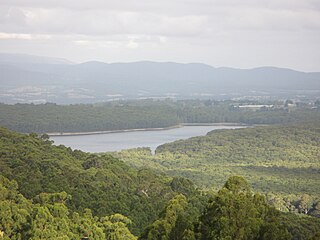
Silvan is a town in Victoria, Australia, located 40 km east of Melbourne, located within the Shire of Yarra Ranges local government area. Silvan recorded a population of 1,323 at the 2021 census.

The Canadian Tulip Festival is a tulip festival held annually each May in Ottawa, Ontario, Canada. The festival claims to be the world's largest tulip festival, displaying over one million tulips, with attendance of over 650,000 visitors annually. Large displays of tulips are planted throughout the city, the largest of which are often in Commissioners Park on the shores of Dow's Lake, and along the Rideau Canal with 300,000 tulips planted there alone.

Keukenhof, also known as the Garden of Europe, is one of the world's largest flower gardens, situated in the municipality of Lisse, in the Netherlands. According to the official website, Keukenhof Park covers an area of 32 hectares and approximately 7 million flower bulbs are planted in the gardens annually. While it is widely known for its tulips, Keukenhof also features numerous other flowers, including hyacinths, daffodils, lilies, roses, carnations and irises.

Guerrilla gardening is the act of gardening – raising food, plants, or flowers – on land that the gardeners do not have the legal rights to cultivate, such as abandoned sites, areas that are not being cared for, or private property. It encompasses a diverse range of people and motivations, ranging from gardeners who spill over their legal boundaries to gardeners with a political purpose, who seek to provoke change by using guerrilla gardening as a form of protest or direct action.

Kings Park, is a 400 hectares park overlooking Perth Water and the central business district of Perth, Western Australia.
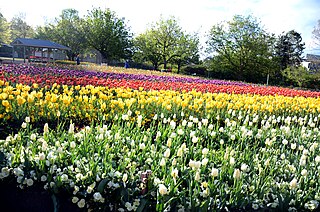
Floriade is a flower and entertainment festival held annually in Canberra's Commonwealth Park on the shores of Lake Burley Griffin. It features extensive displays of flowering bulbs with integrated sculptures and other artistic features. Floriade comes from the Latin word floriat, which means to design with flowers.

The economy of Sydney is notable for its importance in the areas of trading, manufacturing, finance, education, and distribution in Australia. Sydney has the largest economy in Australia.

A flower parade is a parade in which the floats, vehicles, boats, participants, animals and other things are decorated or covered in flowers. Often there are other elements like marching bands and people in costumes. Flower parades are held in several countries, many of which celebrate the forthcoming of the seasons. The oldest flower parade dates back to the 1800s.

Melbourne is the capital and most populous city of the Australian state of Victoria, and the second-most populous city in Australia, after Sydney. Its name generally refers to a 9,993 km2 (3,858 sq mi) metropolitan area also known as Greater Melbourne, comprising an urban agglomeration of 31 local municipalities, although the name is also used specifically for the local municipality of City of Melbourne based around its central business area.

Tulips are spring-blooming perennial herbaceous bulbiferous geophytes in the Tulipa genus. Their flowers are usually large, showy, and brightly coloured, generally red, orange, pink, yellow, or white. They often have a different coloured blotch at the base of the tepals, internally. Because of a degree of variability within the populations and a long history of cultivation, classification has been complex and controversial. The tulip is a member of the lily family, Liliaceae, along with 14 other genera, where it is most closely related to Amana, Erythronium, and Gagea in the tribe Lilieae.
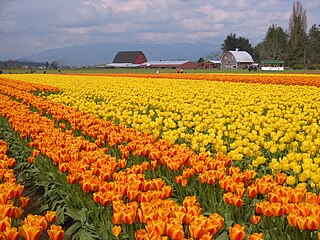
The Skagit Valley Tulip Festival is a tulip festival in the Skagit Valley of Washington state, United States. It is held annually in the spring, April 1 to April 30.

David Glenn is an Australian garden designer. He has been recognised as an early exponent of a new style of Dry Climate Gardening with perennials in Australia. His garden Lambley is located at Ascot, 12 km North of Ballarat in Victoria, Australia. The development of the garden coincided with the millennial drought experienced throughout much of Eastern Australia over the period 2000 to 2010 and earlier. At the time, the garden was recognised internationally for its innovative use of plant types and forms.

Foodscaping is a modern term for the practice of integrating edible plants into ornamental landscapes. It is also referred to as edible landscaping and has been described as a crossbreed between landscaping and farming. As an ideology, foodscaping aims to show that edible plants are not only consumable but can also be appreciated for their aesthetic qualities. Foodscaping spaces are seen as multi-functional landscapes which are visually attractive and also provide edible returns. Foodscaping is a great way to provide fresh food in an affordable way.

Table Cape is an extinct volcano located near Wynyard on the North West of Tasmania, Australia, it is also the name of the locality which encompasses the geological feature. Table Cape is a more or less circular extinct volcano with a flat top, its northern and eastern faces rise steeply from Bass Strait to a height of approximately 170 metres (560 ft) above sea level. It was named by British navigator, Matthew Flinders, as he and George Bass circumnavigated Van Diemen's Land in 1798 upon the Norfolk. Flinders also progressively named the nearby Circular Head, Three Hummock and Hunter Islands.
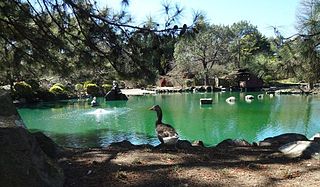
Gardening in Australia reflects the different styles of Australian art, including influences from Roman, Islamic, Italian, French, and English gardens. Modern Australian gardening emphasize gardens and their surroundings, focusing heavily on both urban horticulture and landscape architecture.